Happy news! I’m completely unpacked and settled at my new place! Yay! Now I can get back to actually blogging and crafting. Woo! I might eventually do a “how to decorate cheaply” post once I get some pictures from Snapfish in the mail and hang those up.
Small bit of site news: I decided to switch over from Picasaweb to Flickr for my photo hosting. I figured Flickr is more public, so more people may just happen across my pictures, which would then lead them to my blog, et voila! I’ll be working on getting all the previous photos up there but for now, you can see all of my pictures from today on The Very Official Wicked Cheap in Boston Flickr.
To celebrate my first packing-and-unpacking-free day in over a week, I went out to enjoy a free tour ofThe First Church of Christ, Scientist.
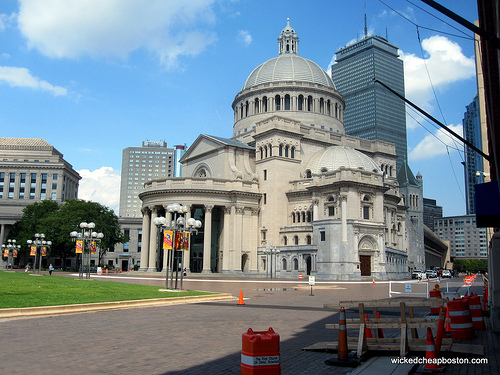
This beautiful building stands near the corner of Mass. Ave and Huntington on what is now the Christian Science Plaza (take the green E line to Symphony or any other green line to Hynes Convention Center). This is the Mother Church and administrative headquarters for the Christian Science Church which is not to be confused with the Church of Scientology. Totally different. You won’t find Tom Cruise being all crazy here.
Brief but informative tours of the church are held Tuesdays through Sundays throughout the year and are completely free. There doesn’t seem to be set tour times, just show up and they will accommodate you.
A little background about the church – The core beliefs of the Christian Science faith focus on the healing power of prayer. This long list of Frequently Asked Questions is helpful for those interested. The church was founded in Boston by Mary Baker Eddy in 1879, four years after she wrote Science and Health with Key to the Scriptures. This book, along with the Holy Bible, is still the basis of the church today. Eddy came to believe in the healing power of prayer after a hard fall that nearly killed her.
The church publishes the Christian Science Sentinel, the Christian Science Journal and the award winning Christian Science Monitor.
Regardless of your religious beliefs, a brief visit to The First Church of Christ, Scientist is worthy of your time, if only for the architecture.
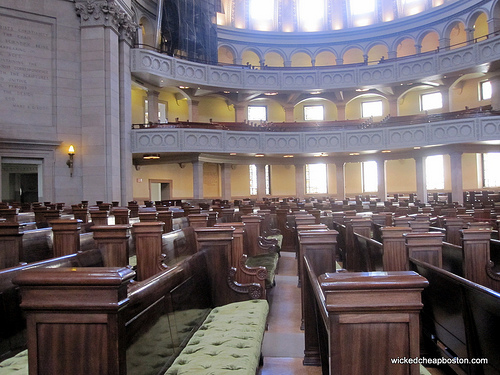
The newer part of the church, called The Extension, was built in 1906. The vast interior seats up to 3,500 people. The domed roof that you see from the street is actually taller than the dome you see while inside. There is a “weather dome” in between the two.
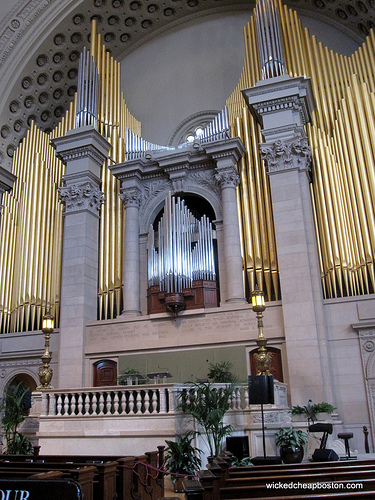
The Aeolian-Skinner pipe organ is one of the largest in the country and is used regularly during services.
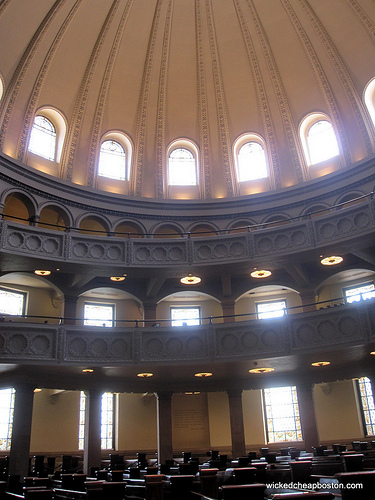
The Extension was done in a Byzantine-Renaissance style.
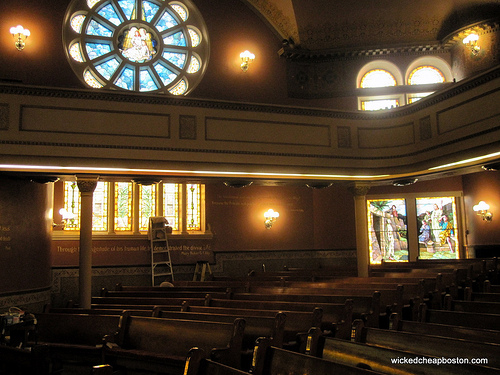
The Original Edifice is attached to The Extension and is still used. The stained glass here is especially pretty.
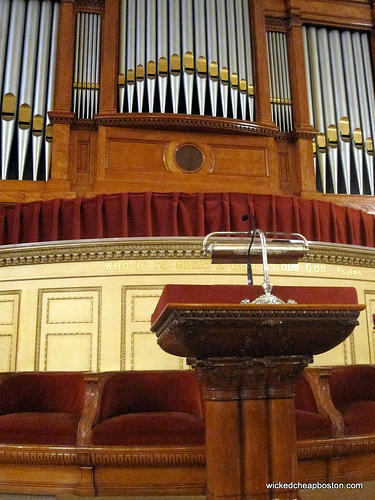

The Christian Science faith does not have ministers or priests. Instead, members of the congregation who have been voted into the role of “Reader” read passages from the Bible and Eddy’s Science and Health with Key to the Scriptures.
Though the free tour ends there, you can extend your stay by visiting the Mary Baker Eddy Library and Mapparium just next door. The entry fee is $6. The small exhibits of the library give a very brief background of Eddy and The Christian Science Monitor but the real highlight is the Mapparium.
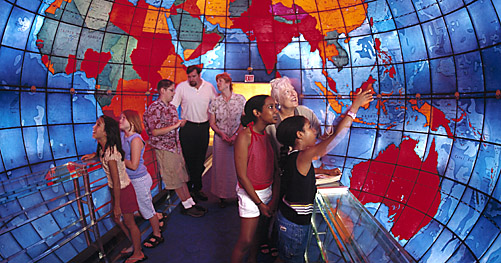
Photo Source: http://www.marybakereddylibrary.org/project/mapparium/
This three story glass globe is unique in that you view it from the inside. From the glass walkway, you can view the world as it was in 1935, at the time of the installation. Originally, it was planned that the glass panels could be removed and updated when countries changed names and borders, but it was ultimately decided that the map should stay frozen in time. To me, this is what makes the Mapparium so interesting. You can still see disused names like Siam and the Soviet Union. Because its glass (sounds aren’t absorbed) and spherical (just plain wacky) the acoustics inside the Mapparium are another interesting feature. If you stand in the middle of the walkway and speak, you’ll hear yourself in stereo, and if two people are standing at either end of the walkway, they can whisper to each other. Crazy talk.
If you’re as much of a map-geek as I am, you’ll love this place.
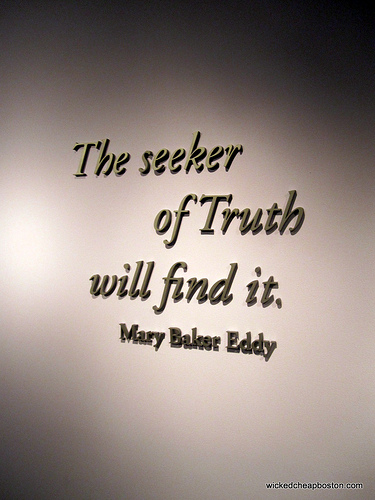
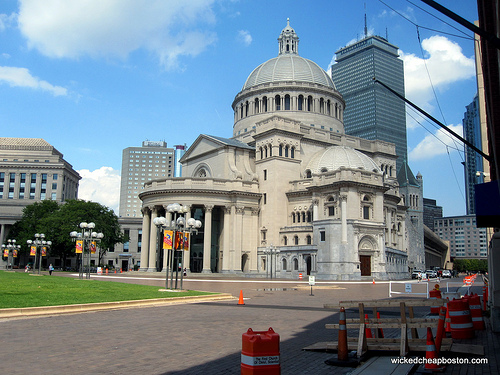
Leave a Reply